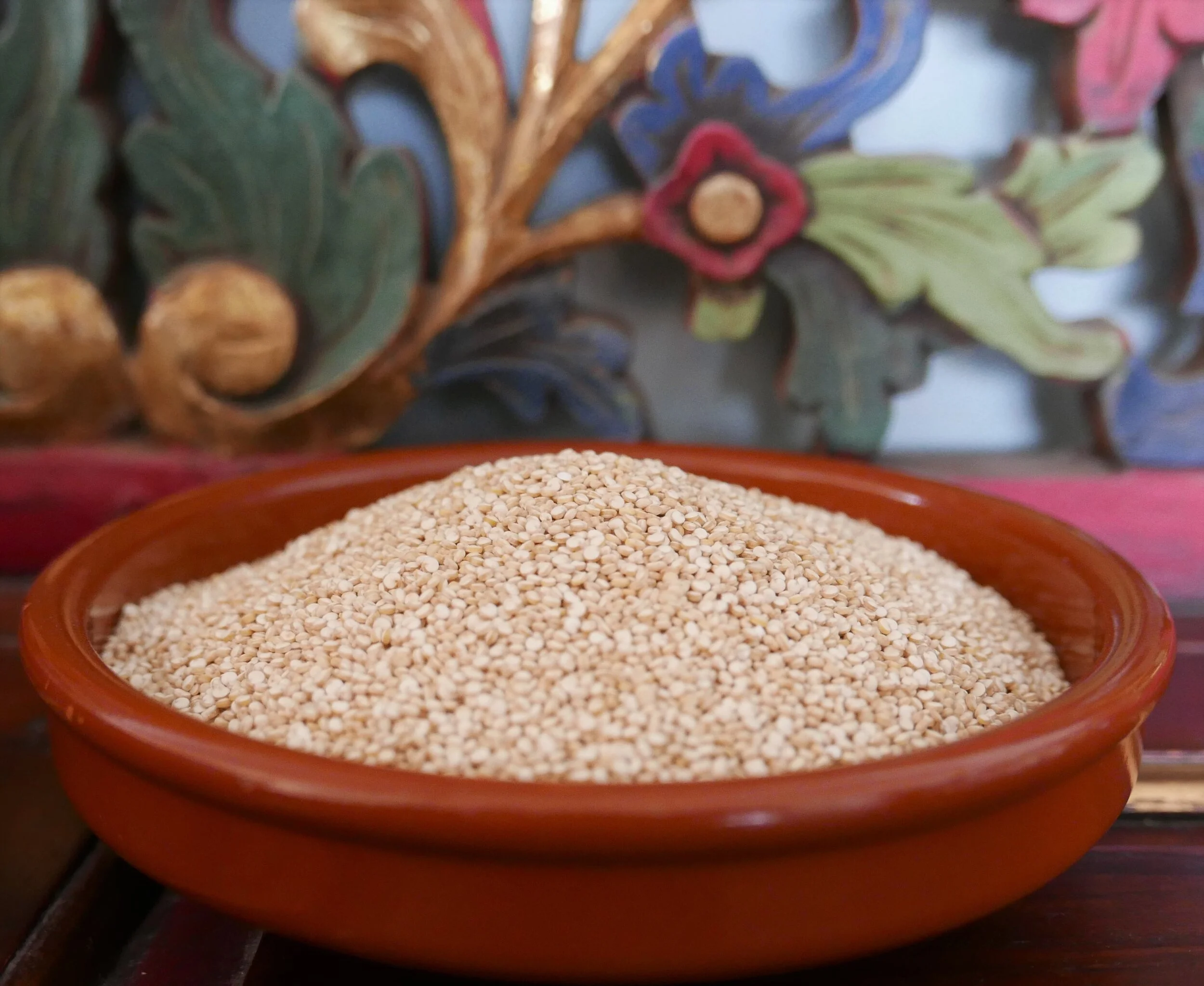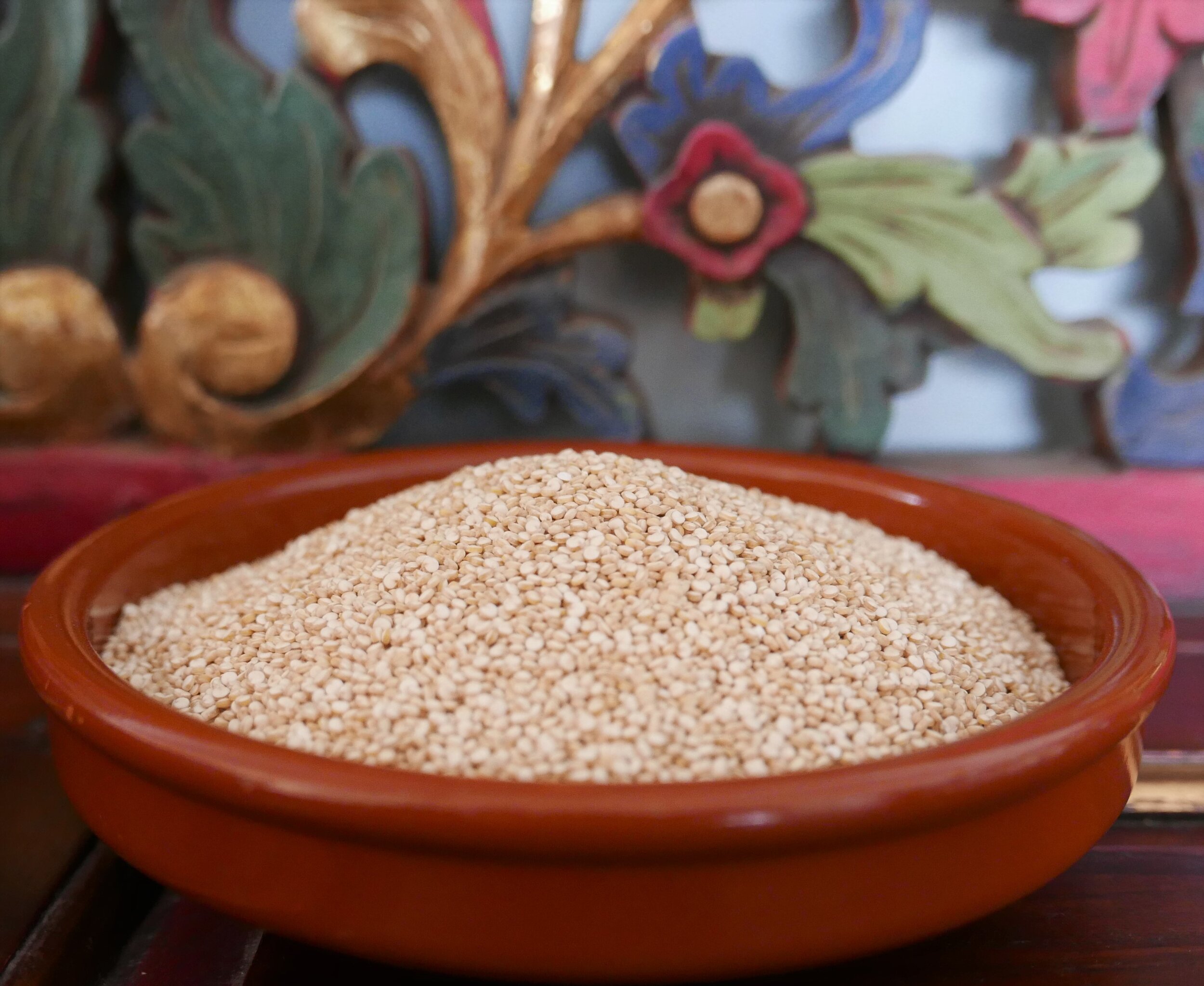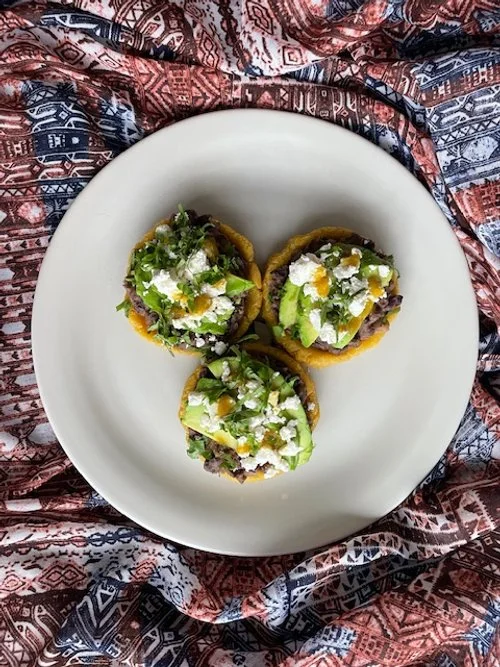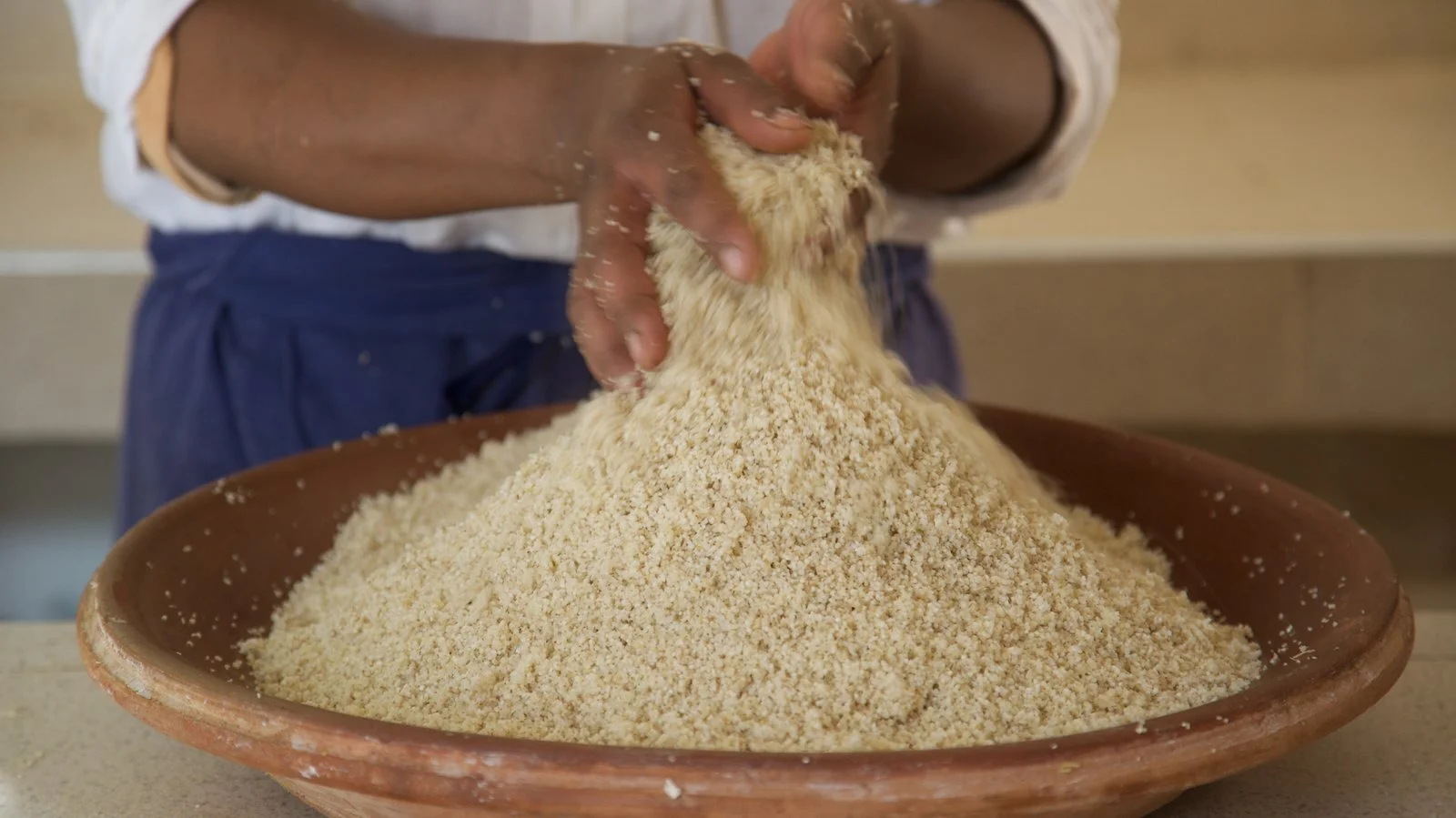explore the world through the universal language of food
Quinoa - The Superfood of the Ancient and Modern world
A cluster of purple flowering, over metre-high quinoa, is truly a magnificent sight to see. The goosefoot plant is closely related to beetroot, spinach and amaranth with edible leaves but most importantly, a nutrient-enriched seed.
What is Quinoa?
Quinoa is now known today as one of the most popular ‘superfoods’ and is available around the world. This pseudo-cereal is extremely versatile eaten as a grain, ground into flour and also made into dairy-free milk. It is a gluten-free plant-based protein that contains amino acids, fibre, vitamins and magnesium.
This ancient crop has existed for over 7,000 years, finding its roots in the Andes region surrounding Lake Titicaca in Bolivia and Peru. Kinwa (in Quechuan language, used by indigenous Andean people) held strong cultural and religious significance within the Incan empire. It was a gift to the Gods and was known as “Chisaya Mama”, the mother of all grains.
When the Spanish conquistadors arrived in the Americas in the 14th Century, they burnt fields of quinoa, banishing the use of the seed for religious ceremonies.
Quinoa Fields
Credit: Cristobal Demarta via Getty Images
Fortunately, quinoa is an extremely stable and adaptable crop, surviving in harsh environmental conditions with little water needed. There are many types of quinoa that have adapted over the years to the varying geographical areas along the Andes, however, the most exported quinoa from South America is the large white seed which we see on our supermarket shelves.
Both Peru and Bolivia contribute to 80% of Quinoa’s global trade, with Peru being the largest producer of the two. Quinoa is grown in dry climates and the surge of its popularity and price after 2006 saw certain varietals starting to be cultivated around the world such as the United States, Europe, Africa and Asia.
The United Nations declared International Year of Quinoa in 2013 to raise awareness of this important ancient crop and to bring attention and support to the farmers in Bolivia and Peru. Quinoa from Bolivia is associated with the name Quinoa Real, produced by 60% of the farmers and certified organic. Peruvian quinoa is broken down into the categories of organic, biodiverse, and supporting women’s livelihoods.
The Andean grains program in South America focuses on aiding poor communities that farm quinoa, in particular women who are the majority farmers of this popular seed. Due to the fact that only certain varieties are exported, the Andean Grains Program are focusing on indigenous strains and implementing them into a local school and hospital diet programs to ensure their long term survival.
Quinoa grows in dry cool climates and begins as an extremely leafy yet slow-growing plant. Sprouting to over a metre high, the quinoa plant begins to flower and most of the leaves fall off. It is at this point the seeds are ready to be harvested.
The stalks are cut and arranged in bundles that are interwoven to withstand strong winds in a formation known as “chujilla” (huts) which are then left to dry. Harvesting in South America is mainly done by hand and when the plants are dry enough, the seeds and seed heads are rubbed gently so the two separate.
The seed is coated in a saponin which is a natural protectant from insects and birds, however, it is extremely bitter. This coating is rinsed and polished away revealing the wonderful grain which we recognize as quinoa.
Quinoa is extremely versatile in cooking due to its texture and neutral flavour. You can create wonderful salads, risottos, porridges and even desserts that are vegan, gluten-free and high in protein.
I made some quinoa fish cakes with a mango chilli dressing if you want to try the recipe HERE
What is Couscous?
With North African origins of about 2000 years ago, couscous has spread around the world – not so much in many forms but in many dishes. In Berber, the word couscous means well-formed or well-rolled and it is an ingredient that has religious and spiritual significance. It is cooked at family celebrations such as weddings and is also eaten at the end of Ramadan. Its nutritional profile is minimal in protein and fibre, like pasta.
How is Couscous made?
Couscous is made from the product of wheat milling known as semolina (not flour) which is crushed into small granules. It is an ingredient that is extremely versatile, quick, and easy to cook and used in both sweet and savoury dishes. Although couscous is made most commonly from wheat, it is also found using millet, corn, sorghum, and barley.
Israeli couscous or ptitim is larger than the traditional type by using both semolina and regular flour, it has a chewier consistency and bite to it.
Traditionally, couscous would be handmade on a large flat plate where semolina is sprinkled lightly with salted water and plain flour. The mixture is rolled until the granules appear and are then sieved with dry flour to separate and obtain pellets of a similar size. This laborious process is repeated, and the couscous is then dried in the sun, stored, or cooked.
Couscous around the world
Couscous in Morocco is usually steamed to be cooked in special pots known as a couscoussiers where stock or stews can be made in the bottom vessel while the couscous is steamed on top, allowing it to maintain a light and fluffy texture. It can also be mixed with water and oil before steaming and then intermittently stirred over a period of time adding butter until the grains are fluffy and cooked. These days, instant couscous is conveniently available, and all is needed to cook it is right parts stock to granule, and an 8 – 10-minute wait.
Preparing Couscous in Morrocco’s Hight Atlas Mountains
Credit: JEff Kohler /NPR
Although it is not known exactly how and when it made its way to Tunisia, there is evidence around the 15th Century in the writings of Tunisian pilgrims, documenting a dish comprising of couscous, butter, beef and cabbage. From Tunisia, it journeyed to Spain by the Moors and also travelled to Sicily where it is commonly found as part of dishes on the west coast. It was either introduced to Sicily in the late 800’s or possibly in the latter part of the 15th Century.
Couscous dishes vary around the world. In Morocco, couscous is usually served with vegetables and a small amount of meat, in Tunisia they enjoy a spiced dish with fish, lamb or beef seasoned with harissa. Couscous is commonly prepared with chicken and chickpeas in Jordan and Syria. In Sicily, their couscous is a mixture of tomatoes, herbs and fresh seafood. They have embraced couscous wholeheartedly by celebrating a festival for it in San Vito Lo Capo every year.
Cooked in larger quantities, couscous is the basis of many dishes that are enjoyed in cultures where food is eaten, shared and enjoyed communally around the world.
Here is a Sicilian seafood couscous recipe to get you started….
















